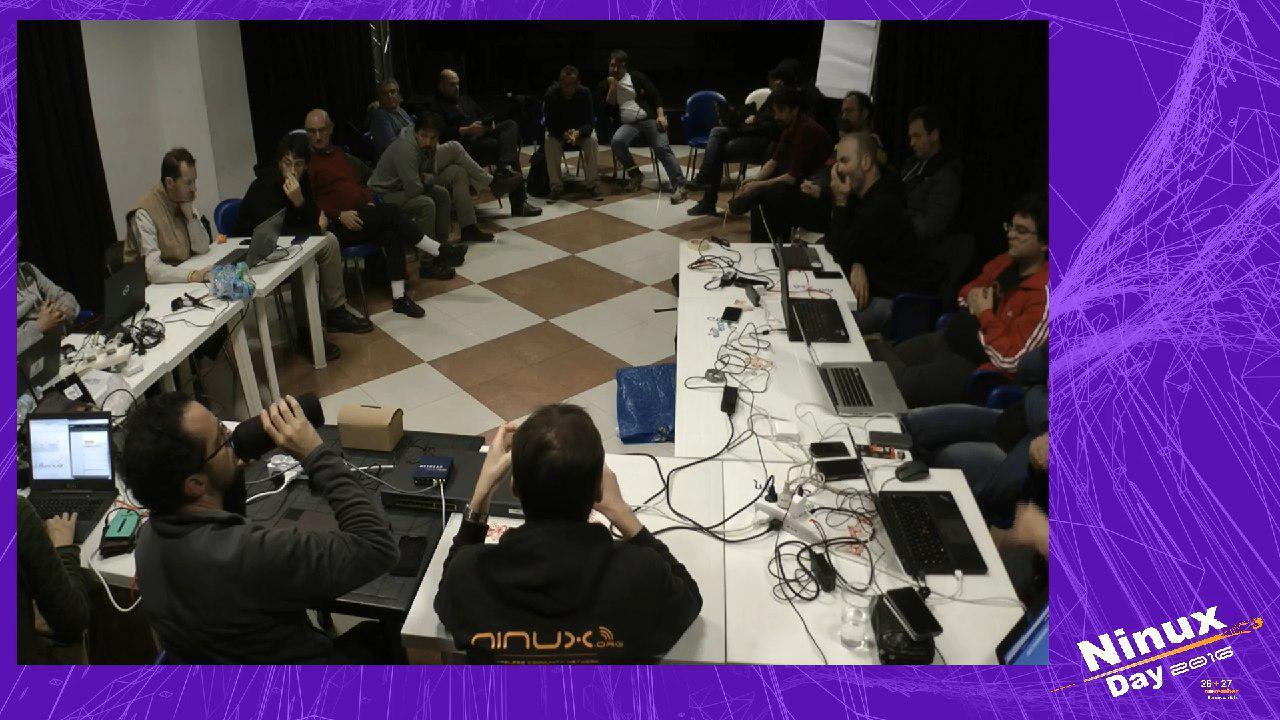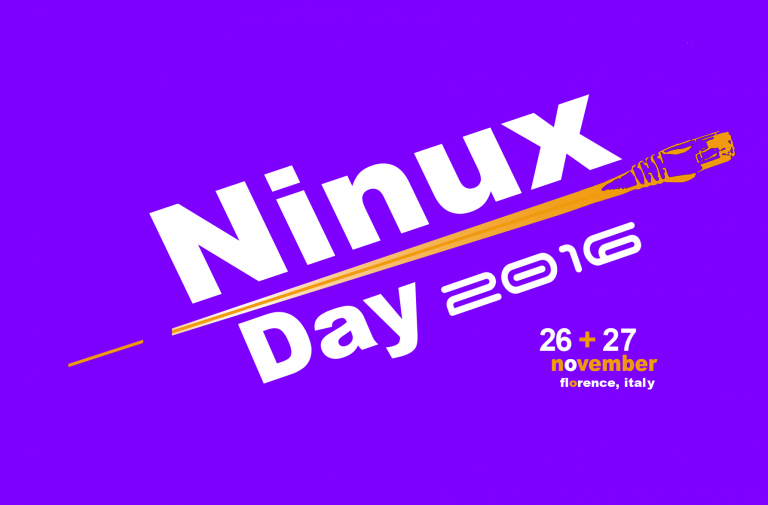netCommons at the NinuxDay, the meeting of the ninux Community Network

Submitted by leonardo on December 1, 2016 - 10:10am
On November 26th and 27th in Florence the ninux community organized the third NinuxDay. The NinuxDay ("the only day that lasts for a week-end") is the aperiodic national gathering of the ninux community, the last one was organized in Rome in 2013.
Ninux is one of the oldest community networks in Europe and it has always been peculiar because it is primarily focused on the network itself, rather than on Internet access. Ninux people try to buid a network for hackers and experimenters, without a specific interest in addressing digital divide, but with a participatory and horizontal organization. Many ninuxers consider their network as the translation into networking of the principles of free software.

In 2013 several ninux "islands" (this is the name of each separate Italian community) were present from the South and the North of Italy. This time only three active islands were represented and in general, a decrease in the activity was observed. The ninux assembly was focused exactly on this theme: why the network is stalling and in some cases decreasing instead of growing like other European experiences and why young hackers do not join ninux.
Among the themes touched in the assembly some key questions were addressed, and partly answered:
- Does it make sense to have an experimental wireless network in 2016? When ninux started, early 2000s, it was impossible to have a 10Mb/s uplink between two houses, and a direct wireless link was outperforming any home ADSL. Techies were interested in the performance of their networks, and were attracted by this new technical innovation. Today Italy is being connected with fiber, and the performance of a wireless link is now comparable to the performance of a fiber-to-the-home connection.
- Is wireless itself enough today to attract youngsters? "wireless" is not anymore appealing as it was, as it become a standard communication media, and young hackers are not passionate about this technology anymore because they give it for granted. ninux needs to hybridise with new technological innovations (makers, devops, etc.) that are more appealing, and break the limit of being a *wireless* community network.
- Does it make sense to re-focus to an Internet access network? The majority of the people of the community still do not see this as a real goal of the network. Given the availability of fiber broadband connections that is enlarging in Italy this theme did not motivate many of the people present in the assembly.
- Does it help to structure the community in a better defined way? ninux is currently completely flat and unstructured. It has no legal entity, not even any sister association that can be used when it is necessary to expose a legal identity. In the past, some unrelated formalized associations agreed to shield ninux when it was necessary to have some legal identification, for instance to participate to research projects. This sparked a long discussion: in the past many ninuxers were utterly against this approach. The feeling today is that if some formalized structure can help to be rooted in the society and thus achieve higher visibility and attract new people then it would have been better accepted. The primary condition is that the association does not represent ninux itself, but remains a separate entity, an instrument to access to some possibility that is today precluded.
Another important theme that was introduced, but only partially analysed is the definition of the community: ninux people gather around a manifesto that is extremely generic, derived by the pico peering agreement. With the growth of the network, and the extension to locations other than Rome (that was the initial core of the network and still contains the majority of the nodes) the need for self-definition of the community raised, and it was touched again in the assembly. Many felt the need to better understand what ninux is, in order to understand how it should change to survive in the future. This task was started collecting the various motivations of the people present in the assembly (that will be futher evaluated) and thus identifying the drivers for the community. It is the beginning of a process that may lead to a better internal view of the community network but needs much more future work if it wants to reach self-determination and be the basis to some form of governance.
It was also the occasion to showcase what netcCommons is doing and in what way it can help the development of the community. We did a brief presentation of the goals and the composition of netCommons and some technical analysis that was carried on on the ninux network and community, that will be included in deliverable 2.5 (the deliverable will be available in January at this link). The community was very interested to the analysis and to the tools used for the analysis, a discussion followed on the way such tools can be integrated in the ninux monitoring tools, or in some more general community monitoring tools such as Grimoire Lab. The feedback gathered is extremely important and opens the way to factual collaboration and adoption of the open source instruments provided by netCommons in the ninux community.
Recent blog posts
- Commonswashing by information technologies and online platforms, the semantic appropriation of the commons
- Blockchain and Community Networks: friends or foes?
- Universal deployment model
- Encounters in the hybrid city: Berlin
- netCommons guidelines for telecom policy-makers
- Network infrastructures: The commons model for local participation, governance and sustainability
- netCommons at EuCNC 2018
- Yearly Meeting of the French Federation of Community Networks
- Data retention and telecommunication providers: New EU Parliament meeting
- netCommons Endorses and Supports the "Mesh is in the air"


